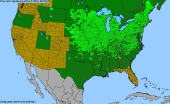
 2
2




 4
4




Weeds are just plants with enough surplus will to live to withstand normal levels of gardening!--Alexandra Petri




 1
1




 4
4




“It’s said war—war never changes. Men do, through the roads they walk. And this road—has reached its end.”
 2
2









greg mosser wrote:in my experience, the shoots, buds, and pods all taste the same. i guess i would accept asparagus/green bean. i usually say ‘a nuttier asparagus’. this is common milkweed, Asclepius syriaca.
also, for what it’s worth, common milkweed regularly gets 4.5 feet tall here. as far as i know, giant milkweed is a mostly tropical shrub, in an entirely different genus, Calotropis, native to southern asia and central africa.
 1
1





 1
1




greg mosser wrote:i’m intrigued now, that you find the various parts to taste different. did you do actual, open flowers? i’ve only ever done flower buds, aka milkweed broccoli.
 I think it was like the bottom three or so in this picture that I cooked. I do need to try younger ones.
I think it was like the bottom three or so in this picture that I cooked. I do need to try younger ones. 1
1









greg mosser wrote:yup! it’s the top three i would have gone for!




 1
1




 2
2




 1
1




 1
1




 1
1




 2
2




 1
1




 1
1




 1
1




craig howard wrote: Peterson field guide to wild edible plants
mentions that if you are going to boil them
you need to start them in boiling water.
Don't put them in cold water and bring them to a boil.
I've heard this is because you will set the latex in if you don't start it in boiling water.
It also needs to be drained and dumped into more boiling water.
This needs to be done 3 times in 15 minutes.
I've eaten the young pods with no problems using this method.
 3
3




 1
1












Blake Lenoir wrote: Have any of you use milkweed silk for filling of vests or pillows during world war 2? Are there any other uses other than food?
Zone 6, 45 inches precipitation, hard clay soil





|
Spare the rod, spoil the child. Here, use this tiny ad named Rod:
The new purple deck of permaculture playing cards
https://www.kickstarter.com/projects/paulwheaton/garden-cards
|


